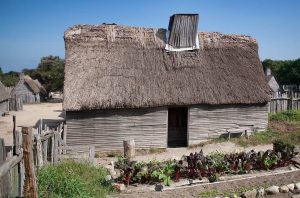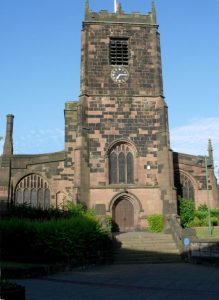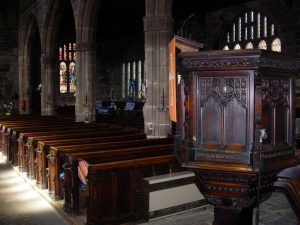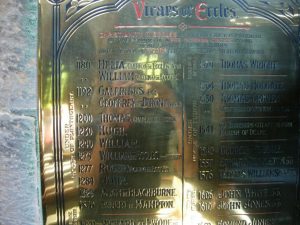 John and Ann in 1618
John and Ann in 1618
 Understanding the family’s conversation was difficult because of their dialect but, from what you could comprehend, it was clear that church was very important to them for several reasons, not the least of which was they were required to attend Church of England religious services. The penalty could be a fine, loss of property or even imprisonment. But more than that, they were devout Christians and the church represented long term stability. It was true that their church was sometimes Catholic and sometimes Protestant, depending upon the religion of the king or queen. But the common people stayed with it. The church was so often the subject of conversation, you decided to visit the family’s church located a short distance away.
Understanding the family’s conversation was difficult because of their dialect but, from what you could comprehend, it was clear that church was very important to them for several reasons, not the least of which was they were required to attend Church of England religious services. The penalty could be a fine, loss of property or even imprisonment. But more than that, they were devout Christians and the church represented long term stability. It was true that their church was sometimes Catholic and sometimes Protestant, depending upon the religion of the king or queen. But the common people stayed with it. The church was so often the subject of conversation, you decided to visit the family’s church located a short distance away.


